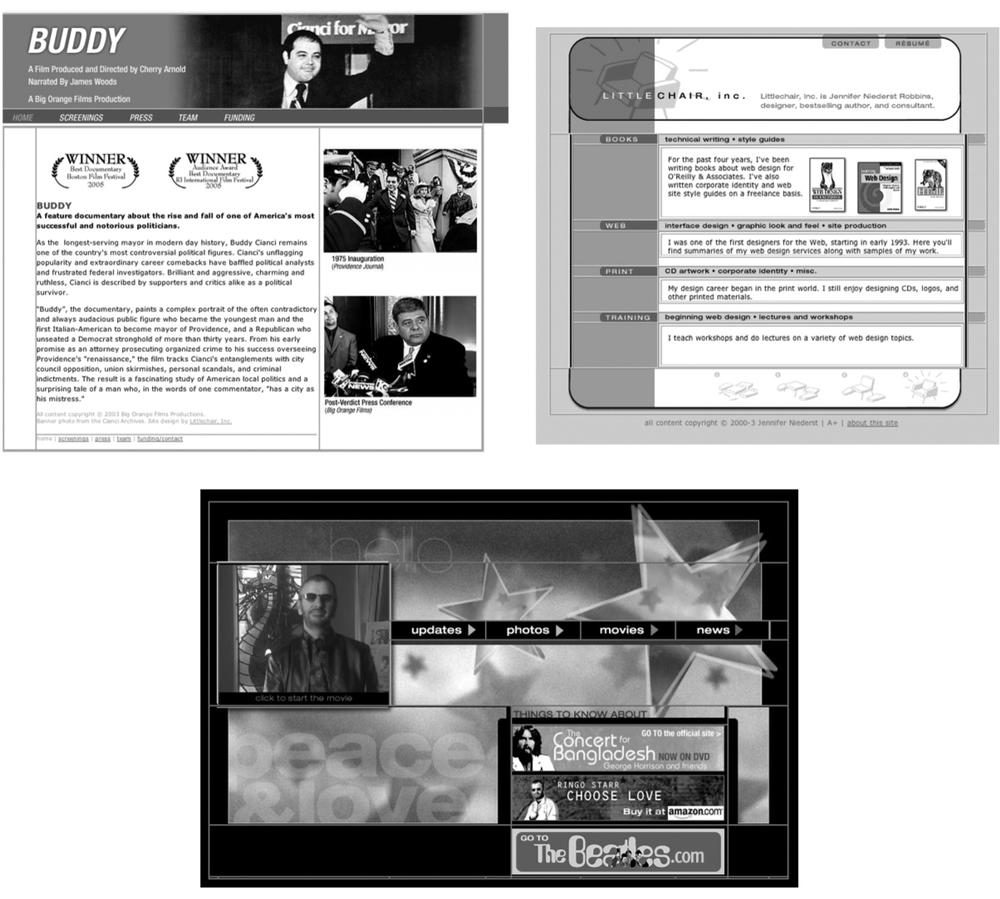Layout Tables
Layout tables, unlike data tables, are used purely as a presentational device for controlling the layout of a page. The HTML 4.01 Recommendation specifically discourages this use of tables, but it wasn’t until CSS became a viable alternative that they have been condemned by the professional web community at large as well.
You can’t turn around on the Web without bumping into a site—even big-name sites—that still uses tables for layout . Some sites use tables as a minimal framework; others have complex tables nested several layers deep to hold things together. Figure 13-2 shows just a few examples of layout tables of varying levels of complexity. The borders have been enhanced to reveal the table structure. (As not to point any fingers, these “old-school” examples are all my own work; I assure you, I’ve changed my ways.)

Figure 13-2. Examples of layout tables
While we are still in a period of transition from table-based design to totally CSS-based design (with flawless browser support, of course), some authors still choose to use tables to establish the basic column structure of the page. While not ideal, it can be done responsibly by using style sheets to keep the table markup minimal and with a mind toward accessibility. These strategies are discussed in the "Responsible Layout Tables" section at the end of this chapter.
Get Web Design in a Nutshell, 3rd Edition now with the O’Reilly learning platform.
O’Reilly members experience books, live events, courses curated by job role, and more from O’Reilly and nearly 200 top publishers.

